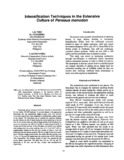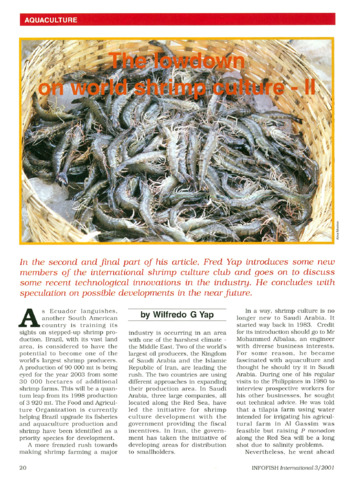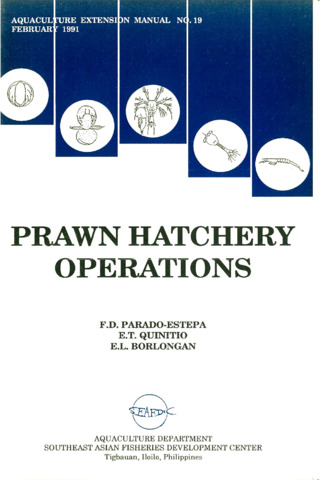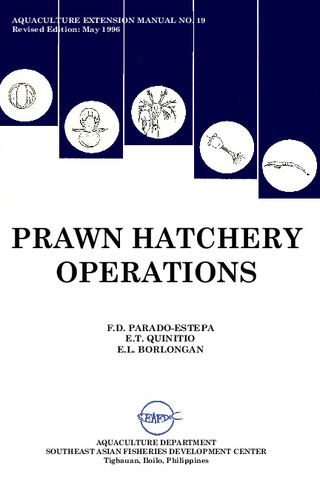Intensification techniques in the extensive culture of Penaeus monodon
Share
Abstract
Traditional shrimp (Penaeus monodon) farming is characterized by low yields, 100-300 kg/ha/yr. To provide farmers with appropriate technology that can immediately improve pond yield with minimal investment, experiments were conducted in brackishwater earthen ponds in two phases. The first phase was to evaluate the optimum stocking density without transfer of stock during the culture period up to harvest time. In the second phase, the best stocking density in the first phase was selected to determine the effect of transfer to newly-prepared ponds at 45-day and 60-day intervals. In the first phase, the ponds were stocked with hatchery-bred fry at the stocking rates of 1, 2 and 4/m2 with no supplementary feeding for the first two months of culture. Feed was introduced after the second month at 6% body weight for the third month and at 4% body weight on the fourth. The yields after four months were 171 kg., 317 kg and 382 kg/ha/crop with survival rates of 85%, 83% and 74%, respectively. The stocking density of 2/m2 was selected for the second phase experiment. The yield was 422 kg, 525 kg and 372 kg/ha/crop at 45 days and 60 days transfer and nontransferred, respectively.
Suggested Citation
Tiro, L. B., Pudadera, B. J., Potestas, I. O., & Kungvankij, P. (1986). Intensification techniques in the extensive culture of Penaeus monodon. In J. L. Maclean, L. B. Dizon, & L. V. Hosillos (Eds.), The First Asian Fisheries Forum. Proceedings of the First Asian Fisheries Forum, 26-31 May 1986, Manila, Philippines (pp. 93-95). Manila, Philippines: Asian Fisheries Society.
Subject
Taxonomic term
Collections
Related items
Showing items related by title, author, creator and subject.
-
The lowdown on world shrimp culture - II
Yap, Wilfredo G. (INFOFISH, 2001)This paper introduces some new members of the international shrimp culture club and goes on to discuss some recent technological innovations in the industry, particularly the polyculture of tilapia (mainly Oreochromis ... -
Prawn hatchery operations
Parado-Estepa, Fe D.; Quinitio, Emilia T.; Borlongan, Emeterio L. (Aquaculture Department, Southeast Asian Fisheries Development Center, 1991-02)The manual, an updated version of the 1984 SEAFDEC/AQD manual, presents the underlying principles and step-by-step instructions of prawn larval and post-larval rearing. The techniques described are not only applicable to ... -
Prawn hatchery operations
Parado-Estepa, Fe D.; Quinitio, Emilia T.; Borlongan, Emeterio L. (Aquaculture Department, Southeast Asian Fisheries Development Center, 1996-05)The manual, an updated version of the 1984 SEAFDEC/AQD manual, presents the underlying principles and step-by-step instructions of prawn larval and post-larval rearing. The techniques described are not only applicable to ...






